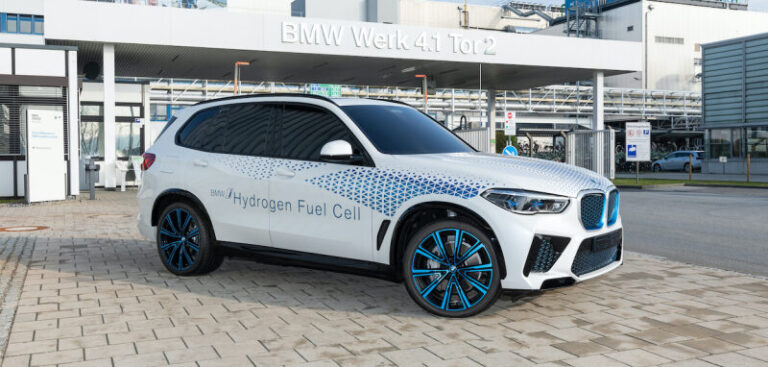BMW is to pilot a small series of BMW i Hydrogen NEXT fuel cell vehicles in 2022, based on the German manufacturer’s current BMW X5. Drawing on experience from BMW’s fifth generation of e-drives, the vehicle will be equipped with a hydrogen fuel cell e-drive system.
The company’s Lightweight Construction and Technology Centre (LuTZ) in Landshut will produce components needed for the hydrogen-electric drivetrain. The facility will manufacture stack housings from light metal to hold the fuel cells, and a media end plate from plastic and light metal castings to create a weathertight seal around the stack housing.
In this instance, ‘media’ refers to the hydrogen, oxygen and coolant that are sent into the housing via the media end plate to start a chemical reaction within the fuel cells. All of these products have been specifically designed to withstand prolonged contact with hydrogen. The components will then be sent to Munich for installation in the fuel cell system.
The fuel cell system of the BMW i Hydrogen NEXT is fed with hydrogen from CFRP (carbon fiber reinforced plastic) tanks and can generate up to 125kW of electrical power for the electric motor, which is mounted on the rear axle. The two 700-bar tanks hold a total of 6kg hydrogen. They help to provide an extended range for the vehicle in all weather conditions and can be refilled in just three to four minutes.
The electric motor in the pilot hydrogen vehicle is the same fifth-generation e-drive used for the BMW iX3. The high-voltage battery that sits above the e-drive serves as an energy buffer and provides additional power under acceleration. The drivetrain system delivers a total output of 275kW (379PS).
“Having the Lightweight Construction and Technology Centre here at the site gives us a real advantage over our competitors,” commented Wolfgang Blümlhuber, head of technology driving dynamics, light metal casting in the purchasing and supplier network at BMW. “We have innovative capabilities and industrialization expertise; we are able to develop strategically crucial innovations ourselves and, at the same time, we can reliably assess external partners and suppliers.”
The vehicle manufacturer says that it is not yet in a position to provide customers with hydrogen-powered vehicles as further development is needed in terms of the filling infrastructure and the energy system, such as green hydrogen being made available in quantity and at a competitive price.


